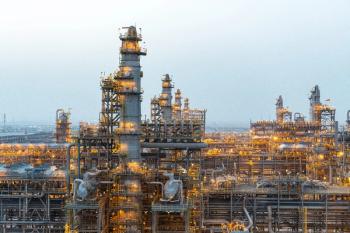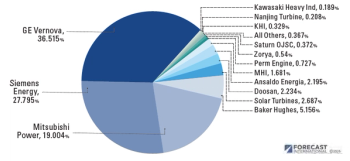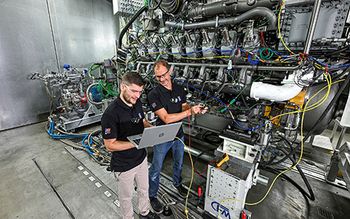
COMBUSTOR DEVELOPMENT IS EASY (PART ONE)
0ver the last few years we have seen a number of novel combustor designs such as the staged lean premixed and the micro swirl combustor. Several research facilities have also introduced new concepts such as the large swirl and the vortex step combustors.
However, combustion technology development has been traditionally a slow evolutionary process — for a reason. Diffusion combustion dominated the market between the 1950s to the 1990s, even after the first dry low NOx (DLN) combustor concepts were introduced in the 1960s at several technical conferences. It took the industry another 10+ years to adopt the technology and introduce a commercial product. And another 20 years after that before DLN became the dominant gas turbine combustor product.
The reason: it is hard to create a gas turbine combustor that works reliably and survives for a long time at full load operation, load transients, part load operation and less than perfect fuels — in other words, the real world.
Building reliable combustors is one of the key challenges for industrial gas turbines. Technology development is complex, requiring heat transfer, fluid flow, and materials engineering analysis and testing. The testing alone can be very expensive. Many times during prototype testing of novel combustor injectors, they turn into molten clumps of metal within minutes of their first operational test. Similarly, combustor transition pieces and liners end up looking like Swiss cheese after only a few hours on the test stand because of localized hot-spots and metal overheating.
But gas turbine operators require the combustor not to just reliably function for a few hours but to survive for four or more years at both full and cyclic loads. That is not an easy challenge. When designing a combustor there are often conflicting requirements one must consider. So to provide a little more clarity about this topic we dedicate this Myth Buster article to the following combustor design compromises and technical challenges:
Lean premixed combustion
Environmental air regulations in many parts of the world require gas turbine combustors to have nitrous oxide (NOx) emissions well below 25 ppm. There are several means of accomplishing this but the most common approach is to moderate the combustion flame temperature using excess air (leanpremix combustion). The lower flame temperature avoids the disassociation of the combustion air’s nitrogen (N2 to N) and the subsequent oxidation of this free radical to react to NOx.
Almost all modern gas turbines use a lean premixed combustion process in which the fuel is diluted with air prior to the combustion process in a premixing volume to avoid high temperature stoichiometric combustion flame regions. Specifically, excess air from the compressor is mixed with the fuel prior to introducing the fuel into the combustor primary zone. This lowers the local flame temperatures and thus reduces the formation of NOx. Lower flame temperatures, however, increase the probability of incomplete combustion, in other words the risk of the formation of CO and unburned hydrocarbons, which are also considered criteria pollutants.
During the combustion process carbon from the fuel reacts with oxygen first exothermically to CO and then, if sufficient heat is available, to CO2. If the local mixture temperature is too low, the reaction is quenched and the CO to CO2 reaction does not occur. High rates of CO production are the result. A design compromise between low NOx and low CO production rate is usually required.
To increase gas turbine efficiency, and to reduce the relative production rate of carbon dioxide, modern gas turbines have to operate at increasing firing temperatures and pressure ratios. Unfortunately, an increased compressor pressure ratio also results in a higher combustor inlet temperature because of the heat of compression introduced in the axial compressor.
Auto-ignition and delay
For some of the most modern gas turbines, where the compressor pressure ratio is as high as 40:1, the combustor inlet temperature can reach 700°C. As a reference, the autoignition temperature of methane-air mixtures is 580°C. This means that the fuel entering the combustor will ignite when it is mixed with this hot compressor discharge air.
Clearly, in a lean premixed gas turbine combustor, this will be a problem since the combustion would occur in the pre-mixer of the fuel injector rather than the primary combustion zone. The effect is similar to dry low NOx flashback and can result in a rapid destruction of the combustor pre-mixer. The fuel combustion kinetic property that can help avoid this from happening is the autoignition delay time.
Auto-ignition delay is the time that it takes the combustible mixture to ignite when it is exposed to a temperature environment above its auto-ignition temperature. For example, for a typical natural gas – air mixture at 700°C the auto-ignition delay time is about 75 milliseconds. The injector must be designed so the residence time of air and fuel mixture is less than this very short time span. This in itself is a challenging design problem for one operating point of the gas turbine, but the gas turbine has to operate under changing loads, so this becomes a significant challenge.
To make things worse, with increasing combustor inlet temperature, and thus increasing gas turbine compressor ratio, the auto-ignition temperature decreases exponentially. At a combustor inlet temperature of 900°C, the auto-ignition delay time is as short as 1 ms. Obviously one could avoid this issue by not using a lean-premixed combustor, but then high NOx emissions would result.
There are several combustor designs under development to address this conundrum, such as the micro-mixture injector, but this technology is still in its infancy and has not been demonstrated in the field. So there is currently a conflict between the ability to increase a gas turbine’s simple cycle efficiency through increased pressure ratio and being able to further reduce low NOx values in the combustor.
Flame speed and blow out
If the propagation speed of the flame exceeds that of the mixture velocity in the premixing zone then there is a high potential for flashback and damage to the injector. Similarly, if the mixture speed (in the primary zone) is higher than the flame speed, a blow-out will result. Flame speed, as well as auto-ignition temperature and delay time, are strongly related to the constituents in the fuel.
For example, hydrogen mixtures have a very fast flame speed, about four times faster than natural gas mixtures, and a very short auto-ignition delay time. Thus, the design of a pre-mixer must not only consider the balance between flame and mixture speed at full load of the gas turbine, but also at part load and during rapid load changing events.
This can be achieved by closing the gas turbine’s variable inlet guide vanes, by bleeding compressor discharge air, or by variable geometry combustor hardware (or combinations thereof). All of these solutions are mechanically challenging and can affect the efficiency of the gas turbine.
Part Two will appear in the 2014 Turbomachinery Handbook, published in December 2013
Authors
Klaus Brun is the Machinery Program Director at Southwest Research Institute in San Antonio, Texas. He is also the past Chair of the Board of Directors of the ASME International Gas Turbine Institute and the IGTI Oil & Gas applications committee.
Rainer Kurz is the manager of systems analysis for Solar Turbines Incorporated in San Diego, CA. He is an ASME Fellow since 2003 and past chair of the IGTI Oil & Gas applications committee.
Newsletter
Power your knowledge with the latest in turbine technology, engineering advances, and energy solutions—subscribe to Turbomachinery International today.





